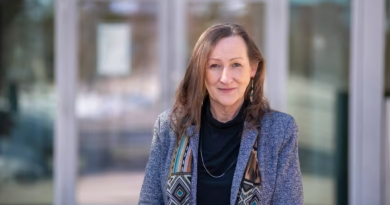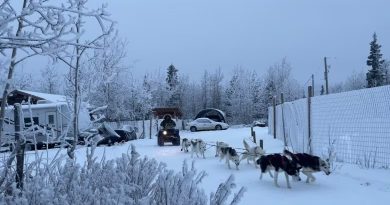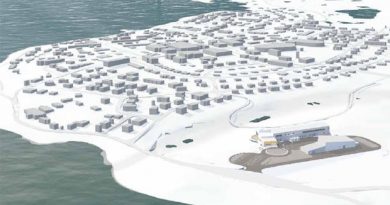Blog: Looking back on the year that was in the Arctic
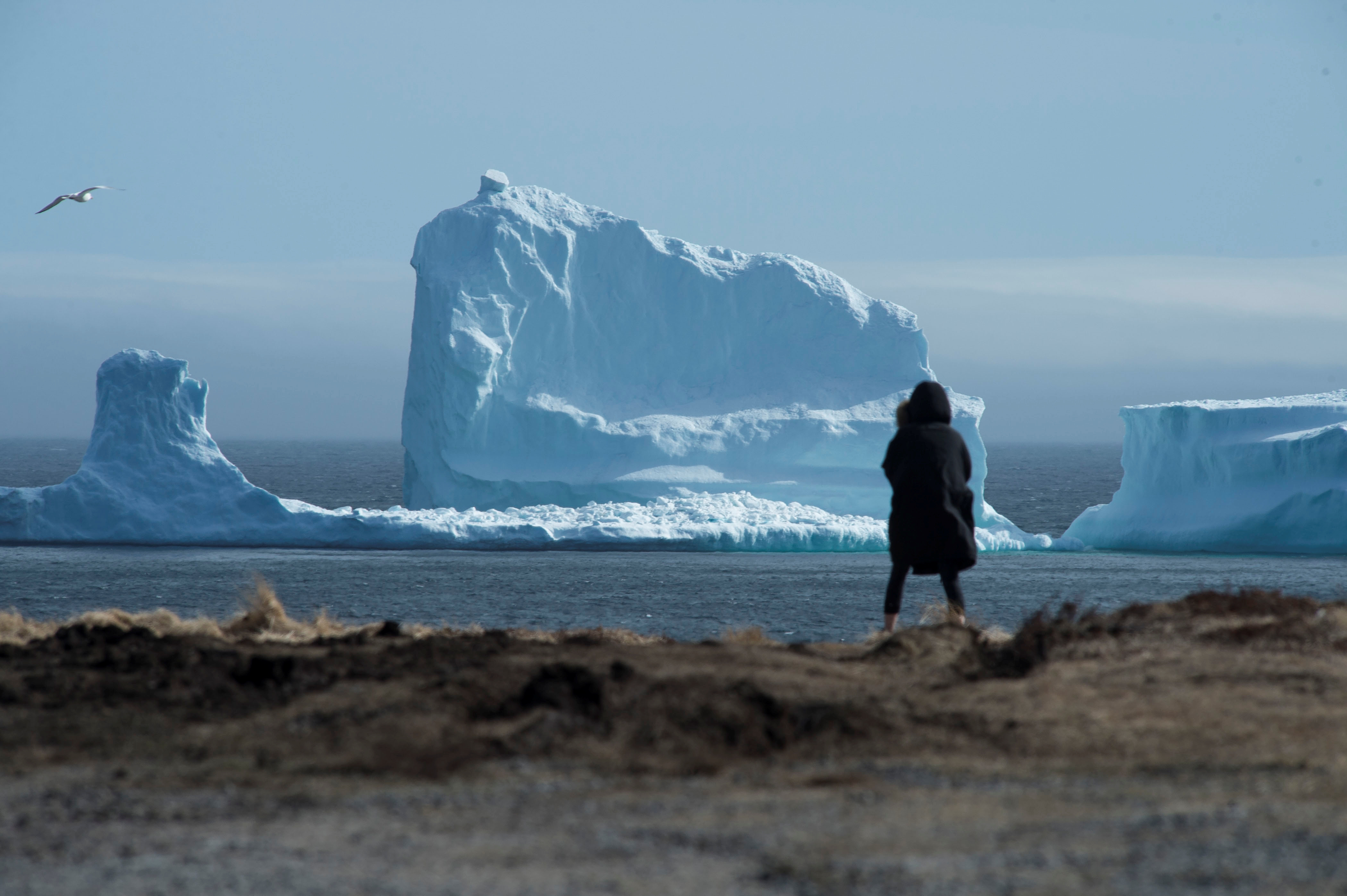
In Utqiaġvik (Barrow), Alaska, the ocean was frozen as far as I could see. It was March, the time of year when Arctic sea ice reaches its maximum extent. A few hundred feet away from the shore, an American flag flapped in the wind at the country’s northernmost post office.
People came and went, mailing letters and picking up packages, just as they do at the nation’s 31,584 other post offices. A few blocks away, the smell of grease and soy sauce hung in the air over a Korean-run Chinese-American restaurant preparing for the dinner rush.
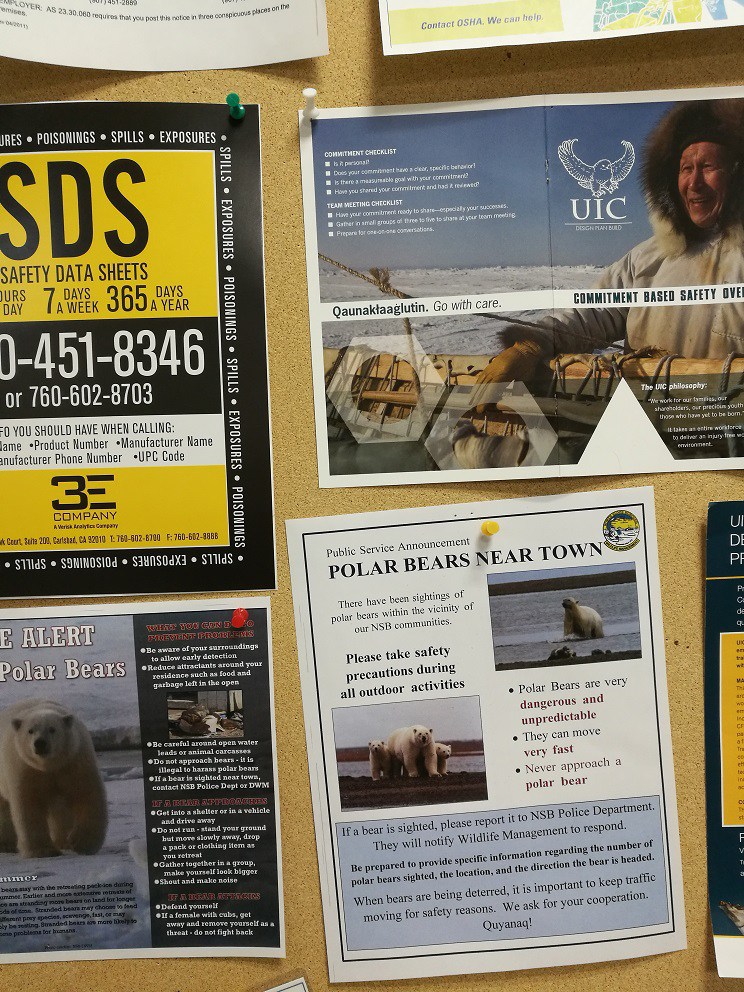
The same distance in the other direction, inside the town’s cultural center, women were sewing together a sealskin boat with tough, sinewy threads made from caribou guts. Signs around town warned of polar bear sightings.
Whitehorse, Yukon
In Whitehorse, Yukon, I checked into the sole hostel in town after walking from the airport through a snowy glade of trees. The young man in the bunk above me was from China and had come up here from southern Canada after hearing of a job opportunity in a pizza restaurant. Having left my bags, I walked through town towards the grocery store.
This being early spring, the main tourist draws were closed, but it was warm enough for a group of young men to be standing around talking outside the Salvation Army thrift store. Not far away was a doner shop and a mural of Bob Marley whose bright colors popped against the white snow and blue sky.
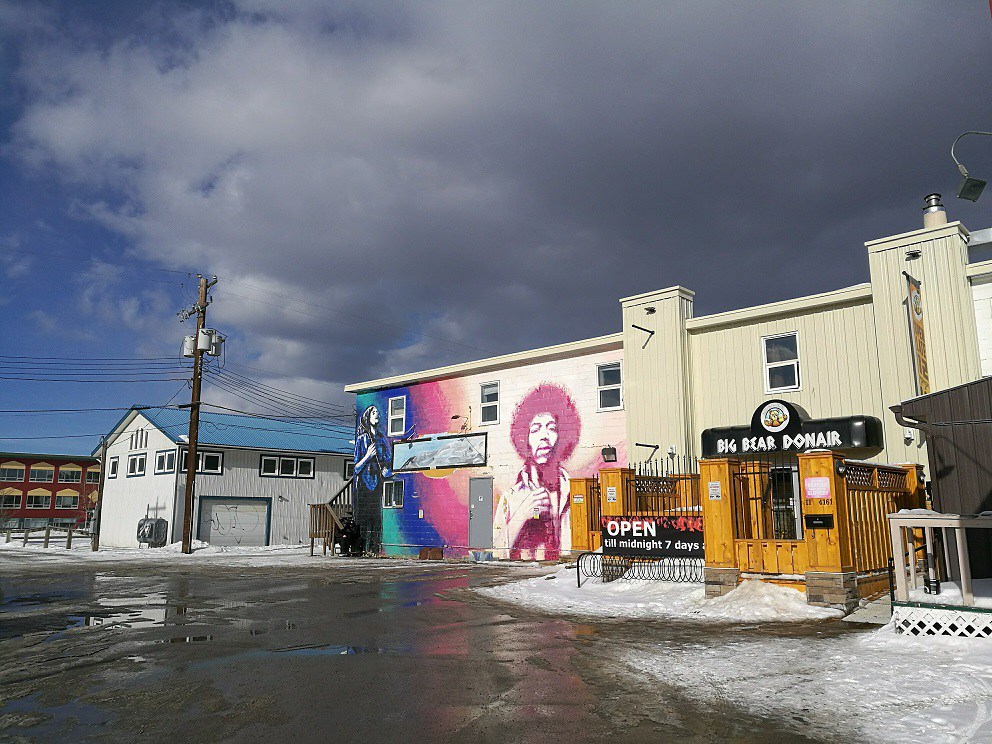
I bought a can of soup for dinner at the sprawling grocery store, where prices were still relatively low thanks to a good road connection with the rest of Canada. A Greyhound bus even serves this town six times a week to and from Prince George (though, with limited demand, may end next year).
Cruises in the Arctic may be up, but overland travel along the famous Dempster Highway that starts in the Yukon is way down even though the road now extends all the way to the Arctic Ocean.
Qaqortoq, Greenland
In Qaqortoq, Greenland, teenagers hung outside the grocery store knocking back sodas and munching on hot dogs, the Danish fast food staple. Some kids looked traditionally Greenlandic, a few Danish, and others were somewhere in between: deep brown eyes and big rosy cheeks set off by fiery red hair and freckles.
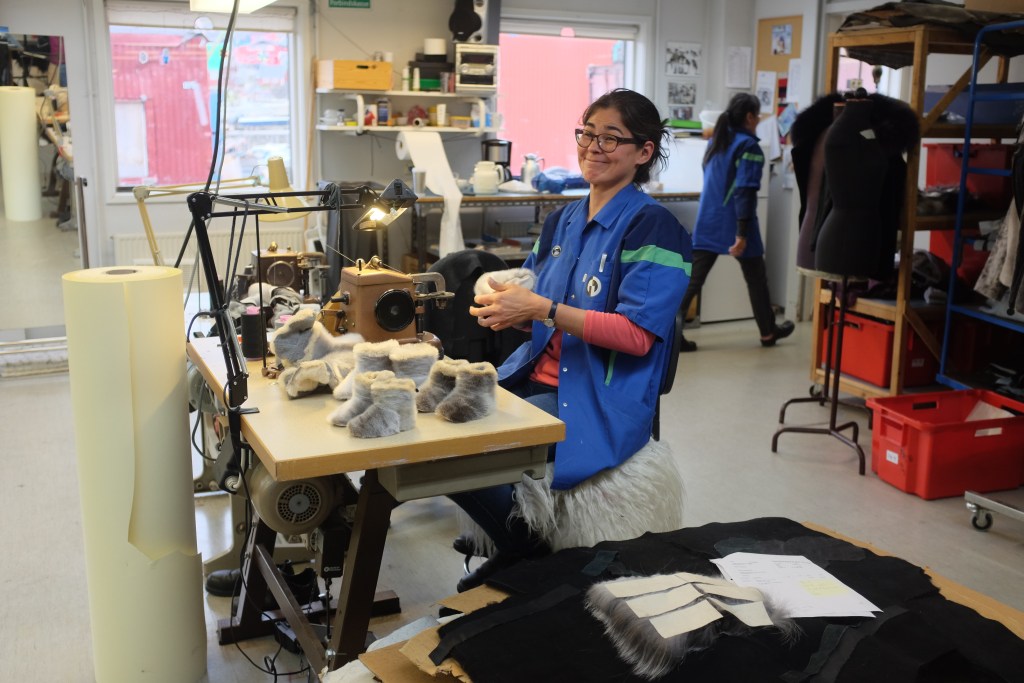
Down the hill, fishermen smoked cigarettes and sold the last of their morning catch at the fish market. Inside the town’s tannery, well-dressed women sewed pieces of brightly colored sealskin together into fine clothes.
Later, once darkness fell, the northern lights flickered over the soccer stadium, but no one came outside to look. It was, after all, just another night in the north.
These are just a few of my memories this year from my travels in the Arctic. I was fortunate enough to make it up to the region three times, visiting Utqiaġvik (Barrow), Alaska; the Canadian Arctic (Whitehorse, Yukon and Inuvik and Tuktoyaktuk in the Northwest Territories); and a few settlements in southern Greenland (Qaqortoq, Kassiarsuq, and Narsarsuaq).
Traveling from Scotland to California, I also passed through the uncomfortably crowded Keflavik International Airport, which has become a major hub for US-Europe travel thanks to Iceland-based WOW Air’s efforts. I had barely just enough time to stock up on chocolate-covered licorice and fill my water bottle for the long flight at the airport’s sole, tepid fountain.
No single narrative
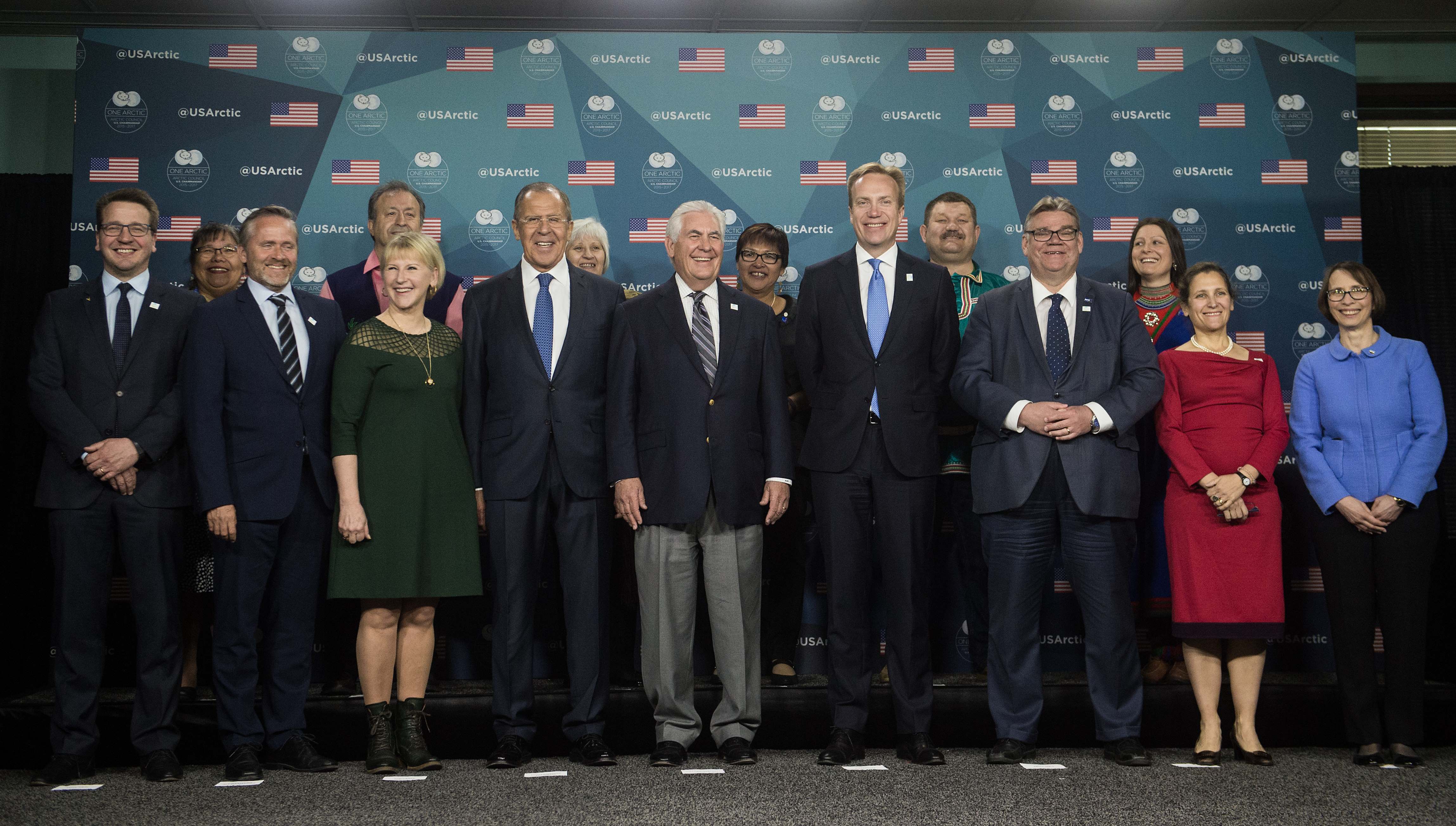
The Arctic is often depicted as a uniformly icy place with indigenous peoples all facing the same, climatically driven hardships. But like any region in the world, people’s stories cannot be reduced to a single narrative.
For instance, in Greenland, small towns are struggling to keep their populations as people move in large numbers to the capital, Nuuk, and sometimes even on to Copenhagen and New York.
Meanwhile in parts of northern Canada and Alaska, there isn’t enough housing to support the growing Inuit and Aboriginal population. And in Iceland, enough residents are concerned about the impact of the rapidly rising number of visitors that a tax has been floated.
Urbanization, overcrowding, and excess tourism aren’t necessarily issues that get top billing in discussions of Arctic affairs. But for all the challenges climate change presents, the Arctic’s four million residents have other worries, too – and also other hopes. In Utqiaġvik, Wesley Aiken, an Iñupiat Elder expressed his optimism about the chances for increased oil and gas drilling in northern Alaska. He offered, “I’m glad these young people are willing to go further out on the land – not the ocean. If they open so-called Alaska Native Wildlife Refuge – that one’s got natural gas out there. There must be something out there.”
To reflect on what I observed in the Arctic this year, earlier this month, I spoke with Eilís Quinn of Radio Canada International for her annual news roundup of the year in the Arctic. We talked about what I found to be the top two stories in the Arctic, a major story that went underreported, and why American participation in the Arctic Council seems to have continued relatively undisturbed by the chaos in the Trump White House. I also shared some of my thoughts on what I think 2018 holds for the Arctic.
Mia Bennett on her 2017 Arctic year
Some of my main points are listed below.
Top two news stories in the Arctic
- The opening of the Inuvik-Tuktoyaktuk Highway in Canada’s Northwest Territories
- The signing of a ban on commercial fishing in the Central Arctic Ocean
The most underreported story in the Arctic
- The slow but steady growth of Russian Arctic oil and gas exploration, both on and offshore, which is now close to eclipsing Alaska’s North Slope in barrels per day
What does 2018 hold?
- First things first: the consequences of the tax bill’s permission for drilling in the Arctic National Wildlife Refuge
- The long-awaited opening of the Canadian High Arctic Research Station
- Developments along Russia’s Northern Sea Route, where the government may decide to either nationalize oil and gas shipping or make the passage more open to the world.
Thanks for a great year, and see you in 2018.
This post first appeared on Cryopolitics, an Arctic News and Analysis blog.
2017 Arctic year in review:
Cooperation, conciliation & Trudeau’s lashing by the NWT, Interview with blogger Heather Exner-Pirot
Fishing diplomacy, rethinking China & how Twitter is improving northern news, Interview with blogger Mathieu Landriault
Russian oil, cooperation over commerce & Canada’s Arctic highway, Interview with blogger Mia Bennett


